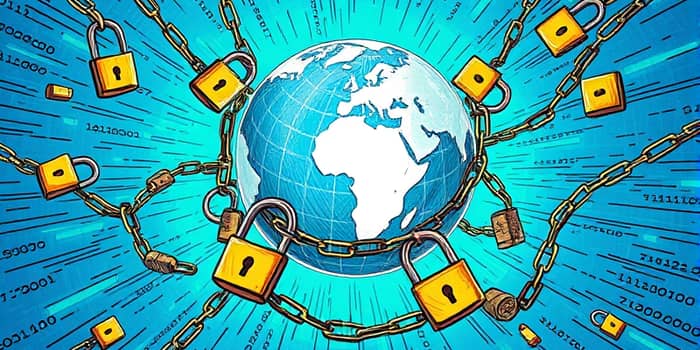As digital transformation sweeps across industries, the invisible battle against malicious actors intensifies. In 2025, cybercrime is projected to cost the global economy $10.5 trillion annually, making it effectively the world’s third largest “economy.” These staggering figures underscore how cybersecurity failures cascade into millions of dollars in damages each minute. Understanding this critical link between cybersecurity and financial loss is essential for businesses, policymakers, and individuals determined to turn the tide.
From phishing scams to ransomware sieges, every breach entails direct and indirect costs. Beyond immediate theft, organizations face lost productivity, reputational damage, regulatory fines, and legal fees. This article explores the multifaceted nature of cyber-related financial loss, sector and regional hotspots, hidden expenses, and best practices to strengthen defenses and foster resilience.
Magnitude of Global Financial Losses
The trajectory of cybercrime losses is alarming. In 2015, estimates hovered around $3 trillion. By 2021, costs soared to $6 trillion, and now they approach $10.5 trillion annually in 2025. This rapid growth, at about 15% per year, outpaces many national GDP growth rates.
The components of this vast sum include:
- Direct theft and extortion payments.
- Business disruption and lost productivity.
- Reputational harm and customer churn.
- Regulatory penalties and legal settlements.
- Costs of investigation, containment, and recovery.
Taken together, these elements reveal why cybercrime now rivals, and in some cases surpasses, global sectors like agriculture or automotive manufacturing in economic impact.
Attack Types Driving Modern Risks
Cybercriminals leverage diverse techniques to exploit vulnerabilities. Among these, phishing and Business Email Compromise (BEC) stand out for their volume and sophistication. In 2025, phishing incidents surged by over 4,000%, fueled by AI-generated impersonations that evade traditional filters.
Meanwhile, ransomware remains a potent weapon. Nearly 70% of U.S. organizations faced at least one ransom demand last year, with average payments around $2 million per incident. Small businesses, despite lower ransom amounts, often spend upward of $120,000 on recovery efforts alone.
Below is a summary of leading attack types:
- Phishing and BEC: Targeted email scams costing up to $5 million per attack.
- Ransomware: Malicious encryption of critical data for extortion.
- Supply Chain Attacks: Compromising trusted vendors to breach downstream clients.
- Data Breaches: Theft of personal and proprietary information.
Sector and Regional Hotspots
Certain industries and regions feel the sting more acutely. Healthcare breaches, for instance, incur the highest recovery costs, averaging $9.77 million per incident. In 2024 alone, 720 healthcare breaches exposed 186 million records, eroding patient trust and driving up insurance premiums.
The United States leads global breach costs, with an average loss of $9.36 million per data breach. California, the nation’s tech hub, recorded $2.2 billion in victim losses across thousands of incidents. Small businesses, though less targeted in headline-grabbing attacks, bear disproportionate recovery expenses due to limited IT budgets.
Indirect and Hidden Costs
Beyond immediate outlays lie a web of hidden expenses. Lost productivity, for instance, can eclipse direct costs if breaches linger undetected. Organizations average 200 days to contain incidents, each extra day potentially costing hundreds of thousands of dollars. Legal and regulatory fees, especially under stringent data protection laws, add another layer of financial strain.
Reputational damage can be even more insidious. Customers and partners may sever ties after a breach, leading to revenue declines that stretch for years. Intellectual property theft undermines competitive advantage, while shareholder confidence can plummet, impacting stock valuations and future investments.
Strategies for Prevention, Detection, and Response
Amid daunting statistics, hope lies in proactive and layered defenses. Embracing a multi-faceted approach can shift the balance in favor of defenders:
- Zero Trust Security Models: Continuous verification of users and devices.
- AI-Powered Monitoring: Detecting anomalies up to 108 days faster.
- Comprehensive backup and disaster recovery plans.
- Regular penetration testing and vulnerability assessments.
- Employee training to recognize and report suspicious activity.
Only 5% of firms increased cybersecurity budgets despite rising losses. Yet investing in robust measures can save millions. Containing a breach within 200 days, for example, can reduce costs by over $1 million, according to recent studies.
Cyber insurance plays a growing role, with premiums projected to hit $23 billion in 2025. However, only 74% of companies currently hold cyber liability coverage, leaving many exposed. Organizations should carefully evaluate policy terms, coverage limits, and response services to ensure they align with risk profiles.
Building Resilience in a Digital Age
The stark reality is that cybercrime is not a temporary surge but an evolving threat. Viewing cybersecurity as an expense rather than an investment invites disaster. Instead, leaders must integrate security into core business strategies, fostering a culture of vigilance and responsiveness.
Collaboration is key. Information sharing among industry peers, public-private partnerships, and threat intelligence exchanges enhance collective defenses. Governments and regulators also have a role in incentivizing best practices through guidelines, tax credits, and clear liability frameworks.
Ultimately, resilience hinges on preparation. Organizations that establish comprehensive incident response plans, test them regularly, and adapt to emerging threats stand the best chance of mitigating financial losses and protecting stakeholder trust.
Conclusion
Cybersecurity and financial health are inseparable in today’s digital ecosystem. The projected $10.5 trillion annual cost of cybercrime highlights an urgent imperative: transform reactive measures into proactive strategies. By understanding the full spectrum of direct and indirect losses, businesses can prioritize investments, fortify defenses, and cultivate resilience.
Every stakeholder—from C-suite executives to frontline employees— plays a part. Through education, technology, and collaboration, we can collectively reduce the impact of cyber threats. The path forward demands vigilance, innovation, and a steadfast commitment to safeguarding the digital foundations of our global economy.
References
- https://deepstrike.io/blog/cybercrime-statistics-2025
- https://www.brightdefense.com/resources/cybersecurity-statistics/
- https://cybersecurityventures.com/hackerpocalypse-cybercrime-report-2016/
- https://www.vikingcloud.com/blog/cybersecurity-statistics
- https://www.sentinelone.com/cybersecurity-101/cybersecurity/cyber-security-statistics/
- https://www.infrascale.com/data-loss-statistics-usa/
- https://www.security.org/insurance/cyber/statistics/










